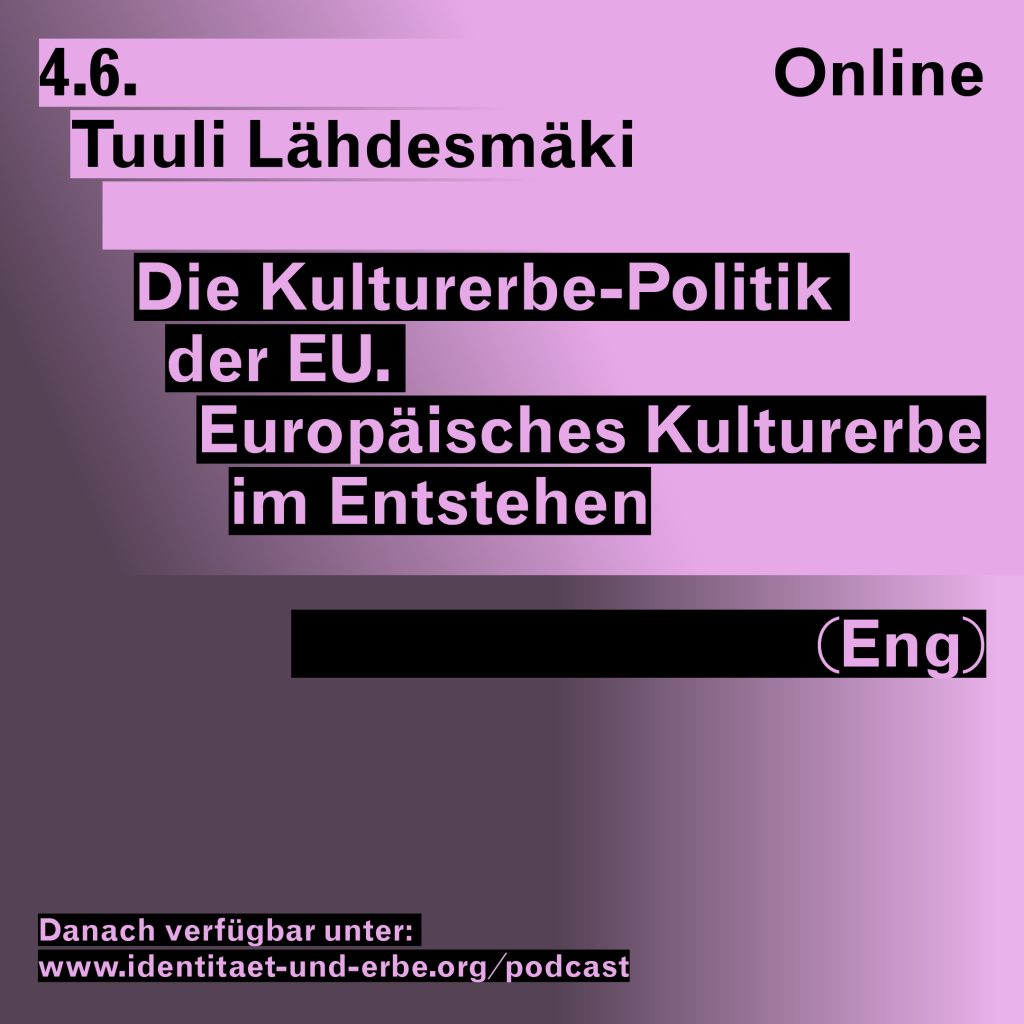Tuuli Lähdesmäki: EU heritage policies and politics: European cultural heritage in the making (ENG)
The past two decades have seen growing political interest in creating and promoting a common European narrative of the past and an idea of shared cultural heritage in Europe. The EU is one of the core promoters of this narrative and idea. These aspects are brought out in several EU resolutions, agendas, and work plans for culture, and have become common elements repeated in EU policy discourses. In the 2010s, the EU has launched several initiatives aiming to foster a ‘European dimension’ or ‘European significance’ of cultural heritage. One of these initiatives is the European Heritage Label. The EU’s interest in cultural heritage is politically motivated. In the 2000s, the Union has faced various political, social, and humanitarian challenges – or crises as they have been often referred to in political and media discourses – that have impacted on European societies. These challenges range, for instance, from Euroscepticism and nationalist politics to refugees fleeing to Europe and feelings of exclusion in European societies. The recently launched EU heritage initiatives and policies can be perceived as the Union’s attempts to tackle timely challenges by seeking to foster unity in Europe and a feeling of belonging to the EU through recognition of and identification with a common or shared cultural heritage fostered and supported by the Union. But heritage is not only a political tool for the EU. It is also developing as a policy sector with its own processes, policies, and officials, which is increasingly addressed and governed in EU policymaking. The EU heritage policies and initiatives and their policy rhetoric about common or shared cultural heritage are discursive, narrative, and performative instances in which European cultural heritage is in the making. This lecture gives an overview of EU heritage policies and politics by focusing on three interrelated topics: 1) Key aims and initiatives in EU heritage policy; 2) the European dimension of cultural heritage constructed in the European Heritage Label; and 3) form of governance in EU heritage policy.
Dr. Tuuli Lähdesmäki has doctoral degrees in art history and sociology. She works as an Associate Professor of Art History at the University of Jyväskylä, Finland. Lähdesmäki’s research focuses on EU cultural and heritage politics and policies, meaning-making processes in art and culture, cultural memory, identities and identity politics, and narratives of Europe. She has explored these topics in several research projects, such as EUROHERIT, HERIDI, ELABCHROM, and REBOOT, funded by the European Commission and the Academy of Finland. Her recent publications include a co-edited volume Heritage Diplomacy. Discourses, Imaginaries and Practices of Heritage and Power (Routledge, 2024) and co-authored books Europe from Below. Notions of Europe and the European among Participants of EU Cultural Initiatives (Brill, 2021) and Creating and Governing Cultural Heritage in the European Union: The European Heritage Label (Routledge, 2020). ORCID: 0000-0002-5166-489X
